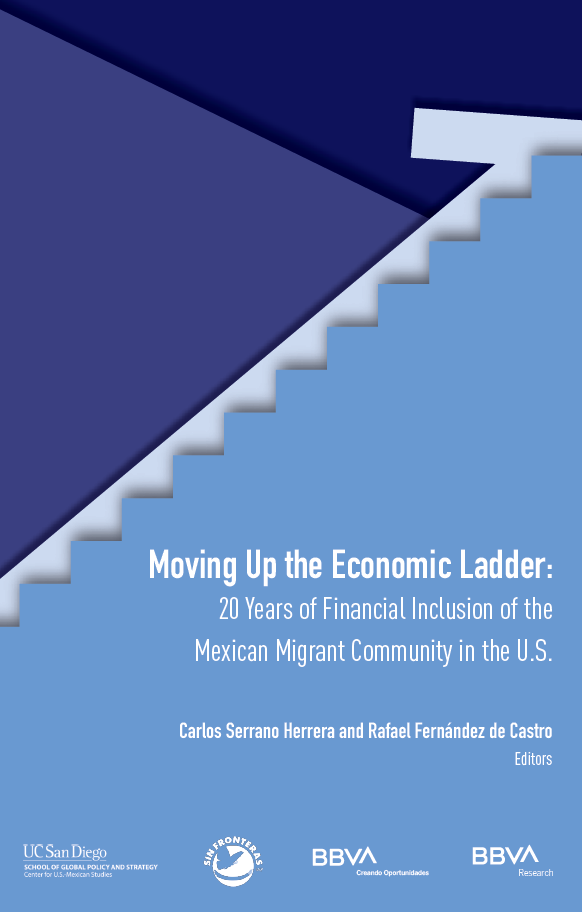Mexico – US | Moving Up the Economic Ladder Book
Published on Monday, December 4, 2023 | Updated on Tuesday, December 5, 2023
Mexico – US | Moving Up the Economic Ladder Book
Moving Up the Economic Ladder: 20 Years of Financial Inclusion of the Mexican Migrant Community in the U.S. A joint publication between the University of California San Diego, Sin Fronteras IAP, the Financial Education department at BBVA México and BBVA Research.
Key points
- Key points:
- Mexico has a high gap in financial inclusion, only 49.1% of its adult population has a savings account, but the Mexican migrants in the United States is more banked, 81.9% has a savings account, but still lags behind migrants from other countries (88.9%) or from the native population (90.9%) in that country.
- There is intergenerational progress in the financial inclusion of Mexican households in the United States. 41.4% of households in the United States made up exclusively of the Mexican migrants had a credit card in 2019; in mixed Mexican households and in households exclusively of second-generation Mexicans this proportion increases to 59.1% and 57.8%, respectively.
- In households with members only of Mexican immigrants, 30.5% declared that they have had a credit application rejected or the credit was not granted. This indicator improves greatly for mixed Mexican households (19.8%) and for households exclusively of second-generation Mexicans (7.6%).
- There is evidence of a correlation between the receipt of remittances in Mexico and having a formal financial product. Among the population aged 18 to 70 that receive remittances in Mexico, 52.3% had a formal savings account, while among the population that did not receive these resources the percentage was 48.7% in 2021.
- 82% of people who send remittances consider that sending this resource from the United States to Mexico is very cheap or cheap. There is still an area of opportunity to reduce the cost charged for sending remittances: the population receiving these resources in Mexico must be banked mainly.
Documents to download
-

Convinced that financial inclusion can help improve the quality of Mexican families in the United States, the Center for U.S.-Mexican Studies at the University of California San Diego, Sin Fronteras IAP, the Financial Education department at BBVA México and BBVA Research joined efforts for this publication.
In fourteen chapters, we evaluate the state and main initiatives for financial inclusion of this population in the last 20 years from a transnational and multisectoral approach. We hope that our analyses and recommendations contribute to generating actions, programs and policies, both public private, to achieve better access to and use of financial services and products for the Mexican community in the United States and their families.
Geographies
- Geography Tags
- Mexico
Topics
- Topic Tags
- Financial Inclusion
- Migration
Tags
Was this information useful?
You may also be interested in
